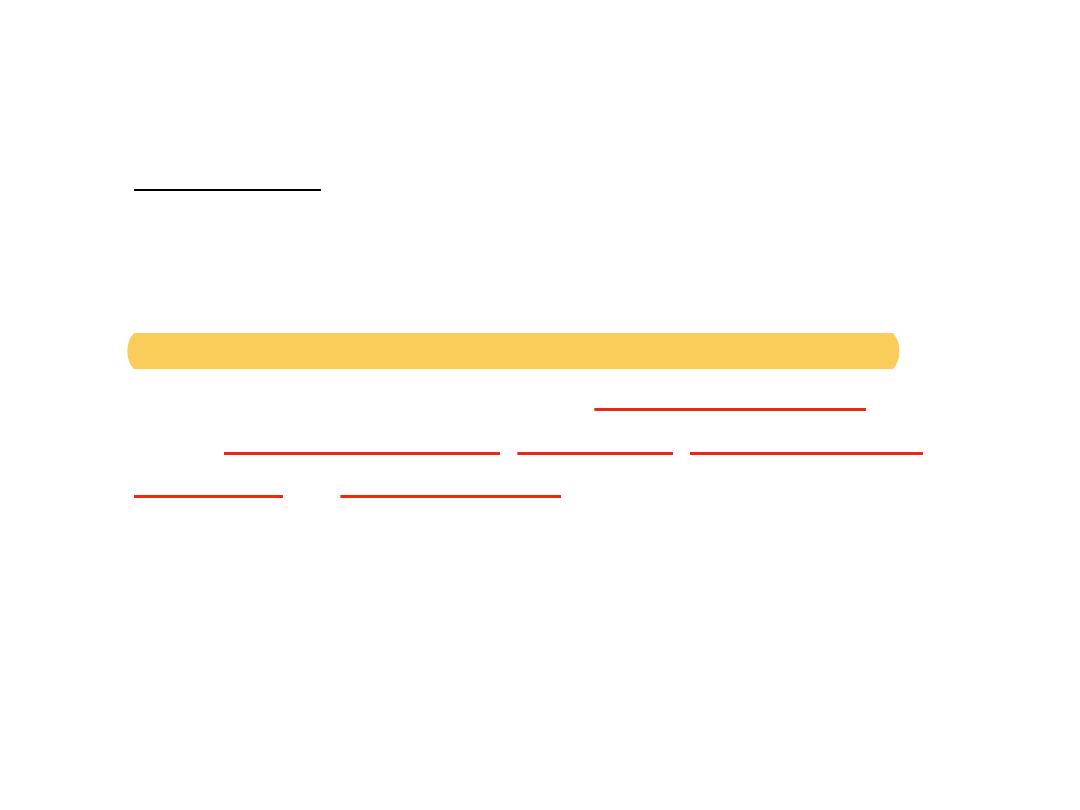
The small & large intestines

Ulcerative colitis:
Epidemiology:
Most common in the USA & Europe.
Common in Ashkenazi jews &
Caucasians. Age 20-40 yrs. M:F ratio
1: 1in early life with a slight male
predominance in later life.

Etiology: Idiopathic, genetic predisposition.
Smoking has a protective role.
Pathology:
Macroscopic: Almost always starts in the
rectum and extends proximally for a variable
distance in a continuous manner, pseudo-
polyps occur due to granulation tissue and
regeneration.
Autoimmune P-ANCA

Microscopic: Involves the mucosa and
sub-mucosa. Depletion of goblet cells
and presence of inflammatory cells in
the lamina propria and crypts of
Lieberkuhn “crypt abscess” . With time
becomes pre-cancerous as dysplasia
develops.

Symptoms:
1. Proctitis: Bleeding, mucosal discharge and
tenesmus. Systemic signs of illness are few and extra-
intestinal manifestations are rare.
Systemic features: Fever, malaise, anemia, hypo-
proteneimia and weight loss.
2. Colitis: Intermittent bloody or bloodless diarrhea.
The more colon is involved, the more systemic
features and extra-intestinal manifestations.

Classification of colitis severity:
Severity Stool frequency Systemic features Inflam.ry markers
Mild < 4/ day - -
Moderate > 4/day mild Increase
Severe >6 / day + Increase
Fulminant > 10 + Increase
# Inflammatory markers are C reactive protein and ESR.

Complications:
Acute: Bleeding, Toxic mega-colon & Perforation.
Chronic: Cancer and extra-intestinal manifestations.
Extra-intestinal manifestations:
Skin: Erythema nodosum & pyoderma gangrenosum.
Eyes: Episcleritis and uveitis.
Liver: Sclerosing cholangitis which might be complicated
by liver cirrhosis or cholangio-carcinoma.
Arthropathy: Ankylosing spondylitis and large joint
arthropathy affecting the knee, ankle wrist and elbow.

Cancer risk:
1% after 10 yrs
10-15% after 20 yrs
20% after 30 yrs

Investigations:
A. Endoscopy: Sigmoidoscopy will show
hyperemia that bleeds on touch in the
rectum. Tiny ulcers that coalesce differ from
ulcers of amoebic dysentery in that there is
no normal intervening mucosa and that the
ulcers are deep and large.

Indications of colonoscopy:
1. Monitor response to treatment.
2. Show extent of disease.
3. Exclude malignancy: Needs multiple
biopsies every 10cm.
4. To distinguish between ulcerative
colitis and Crohn’s disease.

B. Radiology:
Plain X ray: Mucosal islands, Absence of feces,
loss of haustration and toxic mega-colon( size>
6cm).
Barium enema: Loss of haustrations ( hose-
pipe colon) and pseudo-polyps.

Bacteriology test to exclude:
Compylobacter
Shigella
E histolytica
Cl Difficile
Cytomegalovirus and cryptosporidia in the
immune-compromised.

Treatment:
Medical:
5 amino salicylic acid( 5ASA) eg. osalazine and
mesalazine are given per-rectal or orally help to
maintain remission by inhibiting cyclo-oxygenase
( COX). They are formulated in a way that does not
degrade till the colon.
Prednisolone: Given per-rectal or orally to induce
remission during the flare up.
Steroid- sparing drugs: Ciclosporin A and
azathioprine.
Monoclonal antibody to TNF-alpha eg. Infliximab
and Adalimumab.

Acute colitis:
70% are managed conservatively without surgery.
Mild-moderate colitis is managed in the outpatient
department by oral 5 ASA and prednisolone with
hospital admission only if no response to treatment.
Severe- fulminant attack needs hospital admission and
doing chart for vital signs, stool chart, daily abdominal
plain X ray, i.v hydrocortisone q.d.s and rectal steroids. If
failure of improvement in 48 hours, surgery should be
considered and surely performed after 3-5 days. Also
surgery should be performed if colon diameter > 5.5 cm.

Indications of surgery :
Severe to fulminant disease failing to respond to medical
treatment.
Chronic disease causing anemia, diarrhea, tenesmus and
urgency.
Steroid-dependent disease.
Inability to tolerate medical treatment eg steroid –
dependent psychosis and azathioprine pancreatitis.
Neoplastic changes on colonoscopy eg. severe dusplasia or
carcinoma.
Extra- intestinal manifestations
Rarely severe hemorrhage or stenosis.

Types of surgery:
Emergency Sub-total colectomy and ileostomy
Elective:
Sub-total colectomy and ileostomy
Procto-colectomy and permanent ileostomy
Sub-total colectomy and ileo-rectal anastomosis
Restorative procto-colectomy and ileo-anal pouch
anastomosis ( inverted J or W pouch)

Crohn’s Disease: Regional enteritis:
Epidemiology: Same as ulcerative colitis but
slightly more common in females.
Etiology: Same as ulcerative colitis but smoking
relatively increases the risk and exacerbating.
Immune related (exaggerated
immune response to pathogen)

Pathology:
Can affect any part of the GIT from the mouth to the anus
but the terminal ileum + - the colon is involved in 60 % of
the cases and peri-anal lesions are also common..
Macroscopic: Stricture ( thickened wall and narrow lumen)
with fat- wrapping( enchroachment of mesenteric fat over
the bowel wall), cobble stone, fistulas, adhesions, masses
and the lesions are “skip”.
Microscopic: Trans-mural disease, non-caseating
granuloma.

Clinical features:
1. Terminal –ileitis that resembles acute appendicitis.
2. Chronic diarrhea.
3. R.I.F tender mass.
4. Intestinal obstruction due to stricture or adhesions.
5. Weight loss, anemia and fever.
6. Growth retardation.
7. Fistula: Entero-enteric, ileo-vesical, entero-cutaneous
( usually complicates surgery and rarely spontaneous).
8. Colonic Crohn’s Disease: Colitis or proctitis.
9. Anal Crohn’s Disease: Bluish discoloration, fistula and
abscess.

Investigations:
Endoscopy: Aphthus, cobble stone appearance
and stricture.
Imaging: Small bowel enema will show narrowing
of the bowel lumen and string sign of Kantour.
MRI/CT scan.

Treatment:
Medical: Same as UC.
Surgical: Will not cure the disease.
Indications:
1. Intestinal obstruction
2. Bleeding
3. Perforation
4. Failure of medical treatment
5. Fistula
6. Fulminant colitis
7. Malignant
8. Peri-anal disease

Types of surgery:
• Ileo-cecal resection and ileo-ascending or
transverse anastomosis.
• Segmental resection of small or large intestine.
• Colectomy and ileo-rectal anastomosis.
• Sub-total colectomy and ileostomy.
• Temporary loop ileostomy.
• Procto-colectomy and permanent ileostomy.
• Stricturoplasty.
• Anal Crohn’s Disease: Abscess drainage and
fistula seton.

Distinguishing UC from CD:
UC CD
Macroscopic
Distribution Colon and rectum Anywhere in the
GIT
Rectum Always involved Often spared
Peri-anal disease Rare Common
Fistula Rare Common
Stricture Rare Common

Microscopic
Layers involved Mucosa and sub-mucosa Full thickness
Granuloma No Common
Fissuring No Common
Crypt Abscess Common No

Surgical complications of typhoid:
• Perforation: Occurs in the 3
rd
week and
the ulcer is longitudinal.
• Bleeding.
• Ileus.
• Cholecystitis.

T b of the intestine:
Like CD can affect any part of the GIT. Most
common in the terminal ileum, proximal colon
and peritoneum. Two main presentations:
1.Ulcerative: Transverse ulcer.
2. Hyperplastic.
